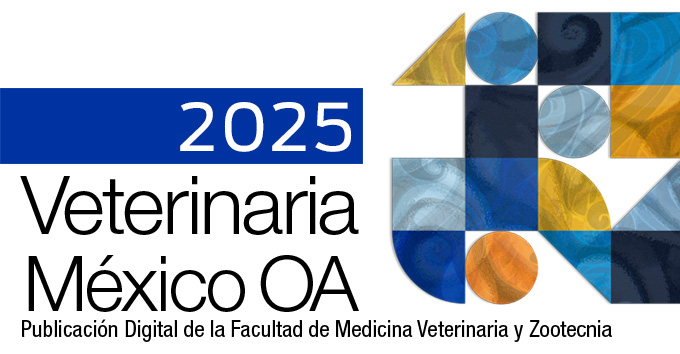Retrospective study on the casuistry of turtles (Reptilia: Testudines) in a veterinary center in Paraguay
Main Article Content
Abstract
Ten turtle species have been reported for Paraguay, and eight of them are in threatened categories. Wildlife commerce is strictly regulated, and according to the most recent data, there is no legal way of acquiring a turtle in the country. The objective of this study is to report the species of turtles that were assisted at the Wild and Exotic Animals Clinic of the Facultad de Ciencias Veterinarias, Universidad Nacional de Asunción, and the main clinical findings. Patient files from 2004 to 2023 were reviewed, and the following data were registered in a spreadsheet: file number and date, species, weight, sex, approximate age, origin, time with the person, feeding, diagnosis, and sub-classification. A total of 496 turtles were registered in individual patient files. Of these, 256 were Chelonoidis chilensis, 125 C. carbonaria, 4 unknown Chelonoidis spp., 8 Acanthochelys macrocephala, 1 A. pallidipectoris, 7 Mesoclemmys vanderhaegei, 6 Phynops spp. (3 P. hilarii, 2 P. geoffroanus, 1 unknown), 2 Hydromedusa tectifera, 14 Kinosternon scorpioides, and 12 unknown Pleurodira. Regarding casuistry, of the 256 C. chilensi brought to the practice, the main cause of consultation was trauma, representing 130 (50.78 %) of the registered files for the species. Regarding C. carbonaria, of the 125 cases, 26 were related to trauma, although routine control was the main cause of consultation. This constitutes the first report on turtle casuistry in Paraguay and may aid in identifying critical species to work with, while concluding that the main problem is still illegal traffic.
Article Details
References
Rhodin AG, Stanford CB, Van Dijk PP, Eisemberg C, Luiselli L, Mittermeier RA, et al. Global conservation status of turtles and tortoises (Order Testudines). Chelonian Conservation and Biology. 2018;17(2):135–161. doi: 10.2744/CCB-1348.1.
Turtle Taxonomy Working Group (Rhodin AGJ, Iverson JB, Bour R, Fritz U, Georges A, Shaffer HB, van Dijk PP). Turtles of the world: annotated checklist and atlas of taxonomy, synonymy, distribution, and conservation status. In: AGJ Rhodin, JB Iverson, PP van Dijk, CB Stanford, EV Goode, KA Buhlmann, RA Mittermeie, editors. Conservation biology of freshwater turtles and tortoises: a compilation project of the IUCN/SSC Tortoise and Freshwater Turtle Specialist Group. 9th edition. Chelonian Res Monogr. 2021;8:1–472. doi: 10.3854/crm.8.checklist.atlas.v9.2021.
Cox N, Yong BE, Bowles P, Fernandez M, Marin J, Rapacciuolo G, et al. A global reptile assessment highlights shared conservation needs of tetrapods. Nature. 2022;605(7909):285–290. doi: 10.1038/s41586-022-04664-7.
Stanford CB, Iverson JB, Rhodin AGJ, van Dijk PP, Mittermeier RA, Kuchling G, et al. Turtles and tortoises are in trouble. Current Biology. 2020;30(12):R721−R735. doi: 10.1016/j.cub.2020.04.088.
Cacciali P, Scott NJ, Aquino AL, Fitzgerald LA, Smith P. The reptiles of Paraguay: literature, distribution, and an annotated taxonomic checklist. Special Publication Museum of Southwestern Biology. 2016;11:1−373.
Martínez N, Cacciali P, Bauer F, Cabral H, Tedesco ME, Vinke S, et al. Estado de conservación y lista roja de los reptiles del Paraguay. Boletín del Museo Nacional de Historia Natural del Paraguay. 2020;24(1):5−128.
Ministerio del Ambiente y Desarrollo Sostenible & Wildlife Conservation Society Paraguay. Guía para la Identificación de las Especies de Fauna Nativa más Traficadas en Paraguay. Asunción, Paraguay: MADES, WCS; 2024. 63 pp.
Franco M, Câmara F, Rocha DC, Souza RM, Oliveira N. Animais Silvestres apreendidos no período de 2002 a 2007 na macrorregião de Montes Claros, Minas Gerais. Enciclopédia Biosfera. 2012;8(14):1007−1018.
Moura S, Pessoa F, Oliveira F, Lustosa AH, Soares C. Animais silvestres recebidos pelo Centro de Triagem do IBAMA no Piauí no ano de 2011. Enciclopédia Biosfera. 2012;8(15):1748−1762.
Prado WS, Waller T, Albareda DA, Cabrera MR, Etchepare EG, Giraudo AR, et al. Categorización del estado de conservación de las tortugas de la República Argentina. Cuadernos de Herpetología. 2012;26(Supl 1):375−388.
Do Nascimento JS, Badarane AM, de Oliveira Dantas MM, Urbanski AS, do Carmo ECO, Ribeiro VMF. Espécies silvestres alojadas no Centro de Triagem de Animais Silvestres/Acre: implicações conservacionistas. Semina: Ciências Biológicas e da Saúde. 2016;37(1):63−76. doi: 10.5433/1679-0367.2016v37n1p63.
Almeida PS, Calandrini V. O tráfico de animais silvestres na Metrópole São Paulo–Brasil: Uma análise dos aspectos legais, culturais e característicos dessa atividade (in) sustentável. Veredas do Direito. 2021;18(42):65−96. doi: 10.18623/rvd.v18i42.2175.
Cunha GB, Lima FVCR, Soares MEQ, Hirano LQL. Wild fauna received by the Wild Animal Screening Centre and referred to the Veterinary Hospital of the University of Brasília. Ciência Animal Brasileira. 2022;23:e-72818E. doi: 10.1590/1809-6891v23e-72818E.
López AP, Juliá JP, Quiroga PA, Rodríguez JS. Análisis de la base de datos de ingresos de reptiles a la reserva experimental Horco Molle, Universidad Nacional de Tucumán (Tucumán, Argentina). Acta Zoológica Lilloana. 2010;54(1-2):93−101.
Amavet P, Sciabarrasi A, Sánchez J, Bersezio N, Castiglioni M, Siroski P. Back home: strategies for the reintroduction of Chelonoidis chilensis into the wild. Herpetological Conservation and Biology. 2022;17(3):602−611.
Lopes PRD. Comunicação comércio de animais silvestres. Bioikos. 1991;5(1):49−56.
Domic-Rivadeneira E, Montaño R, Rey-Ortíz G, Lizarro D, Carvajal-Bacarreza P, Acebey C, et al. Tortugas de Bolivia: prioridades en investigación y conservación. Kempffiana. 2021;17(1):42−62.
Romito ML, Parachu MV, Imhof A. Growth and reproduction of Chelonoidis chilensis (Reptilia, Testudinidae) in captivity. Scientia Interfluvius. 2015;6:64−73.
Buteler C, Lábaque MC, Leynaud GC. Thermal biology of zoo-housed Chelonoidis chilensis: determining the activity pattern and estimating selected and critical maximum temperature. Herpetological Conservation and Biology. 2022;17(1):111−121.
Romero S, Leynaud GC, Lábaque MC. Caracterización de individuos decomisados de Tortuga Chaqueña (Chelonoidis chilensis) en instituciones de recepción de fauna en Córdoba, Argentina. In: P Mayor, MI López, editors. XV Congreso Internacional de Manejo de Fauna Silvestre de la Amazonía y Latinoamérica. Santa Marta, Colombia: COMFAUNA y Fundación Natura; 2023. pp. 439−440.
Fritz U, Alcalde L, Vargas‐Ramírez M, Goode EV, Fabius‐Turoblin DU, Praschag P. Northern genetic richness and southern purity, but just one species in the Chelonoidis chilensis complex. Zoologica Scripta. 2012;41(3):220−232. doi: 10.1111/j.1463-6409.2012.00533.x.
Miller CL. Trauma and physical disease. In: MM Garner, ER Jacobson, editors. Noninfectious Diseases and Pathology of Reptiles. Boca Ratón, Florida: Taylor & Francis; 2021. pp. 231−272.
Brown JD, Sleeman JM. Morbidity and mortality of reptiles admitted to the Wildlife Center of Virginia, 1991 to 2000. Journal of Wildlife Diseases. 2002;38(4):699−705. doi: 10.7589/0090-3558-38.4.699.
Schrader GM, Allender MC, Odoi A. Retrospective study of Initial complaints and diagnoses of box turtles (Terrapene carolina carolina) presented to a Wildlife Clinic in Tennessee from 1995−2007. Proceedings Association of Reptilian and Amphibian Veterinarians. Juliet, Tennessee, US: Curran Associates; 2008.
Rivas AE, Allender MC, Mitchell M, Whittington JK. Morbidity and mortality in reptiles presented to a wildlife care facility in Central Illinois. Human-Wildlife Interactions. 2014;8(1):78−87. doi: 10.26077/34wh-vh39.
Scheelings TF. Morbidity and mortality of reptiles admitted to the Australian Wildlife Health Centre, Healesville Sanctuary, Australia, 2000–13. Journal of Wildlife Diseases. 2015;51(3):712−718. doi: 10.7589/2014-09-230.
Sack A, Butler E, Cowen P, Lewbart GA. Morbidity and mortality of wild turtles at a North Carolina Wildlife Clinic: a 10-year retrospective. Journal of Zoo and Wildlife Medicine. 2017;48(3):716−724. doi: 10.1638/2016-0053.1.
Romero F, Espinoza A, Sallaberry-Pincheira N, Napolitano C. A five-year retrospective study on patterns of casuistry and insights on the current status of wildlife rescue and rehabilitation centers in Chile. Revista Chilena de Historia Natural. 2019;92:6. doi: 10.1186/s40693-019-0086-0.
Beaudry F, Demaynadier PG, Hunter Jr ML. Identifying hot moments in road‐mortality risk for freshwater turtles. The Journal of Wildlife Management. 2010;74(1):152−159. doi: 10.2193/2008-370.
Hoerner P, Baptistotte C. Chelonia (Tartaruga, Cagado, Jabuti). In: ZS Cubas, JC Ramos, JL Catão-Dias, editors. Tratado de Animais Selvagens –Medicina Veterinária. Sao Paulo, Brasil: Roca; 2007. pp. 86−119.
Gibbs JP, Shriver WG. Estimating the effects of road mortality on turtle populations. Conservation Biology. 2002;16(6):1647−1652. doi: 10.1046/j.1523-1739.2002.01215.x
Frye FL. Traumatic and Physical Diseases. In: JE Cooper, OF Jackson, editors. Diseases of the Reptilia. London, GB: Academic Press; 1981. pp. 387−407.
Hedley J, Eatwell K. Cloacal prolapses in reptiles: a retrospective study of 56 cases. Journal of Small Animal Practice. 2014;55(5):265−268. doi: 10.1111/jsap.12199.
Stahl SJ. Reproductive tract. In: SJ Divers, SJ Stahl, editors. Mader’s Reptile and Amphibian Medicine and Surgery. 3rd edition. St. Louis, Missouri, US: Elsevier; 2019. pp. 1077−1089.
Stahl SJ, De Nardo D. Theriogenology. In: SJ Divers, SJ Stahl, editors. Mader’s Reptile and Amphibian Medicine and Surgery. 3rd edition. St. Louis, Missouri, US: Elsevier; 2019. pp. 849−893.
Chávarri M, Berriatua E, Giménez A, Gracia E, Martínez-Carrasco C, Ortiz JM, de Ybáñez RR. Differences in helminth infections between captive and wild spur-thighed tortoises Testudo graeca in southern Spain: a potential risk of reintroductions of this species. Veterinary Parasitology. 2012;187(3-4):491−497. doi: 10.1016/j.vetpar.2012.02.007.
Eatwell K, Richardson J. Gastroenterology –small intestine, exocrine pancreas, and large intestine. In: SJ Divers, SJ Stahl, editors. Mader’s Reptile and Amphibian Medicine and Surgery. 3rd edition. St. Louis, Missouri, US: Elsevier; 2019. pp. 761−774.
Wellehan JFX, Walden HDS. Parasitology (including hemoparasites). In: SJ Divers, SJ Stahl, editors. Mader’s Reptile and Amphibian Medicine and Surgery. 3rd edition. St. Louis, Missouri, US: Elsevier. 2019. pp. 281−300.
Knotek Z, Divers SJ. Pulmonology. In: SJ Divers, SJ Stahl, editors. Mader’s Reptile and Amphibian Medicine and Surgery. 3rd edition. St. Louis, Missouri, US: Elsevier; 2019. pp. 786−804.
Clay Duarte SB, Vetter JR, Araujo A, Gimenez G, Narváez ML, Petters J, Núñez L. Estandarización y caracterización molecular de Mycoplasma spp., en tortugas terrestres (Chelonoidis chilensis) mantenidas en un centro de rescate en la Ciudad de Mariano Roque Alonso, Departamento Central, 2024. Sociedad Científica del Paraguay; IX Encuentro de Investigadores: Asunción, 2024.
Buskirk JR. Field observations on Phrynops williamsi and other Uruguayan chelonians. Vivarium. 1989;1(4):8−11.
Ernst CH, Barbour RW. Turtles of the World. Washington, DC: Smithsonian Institution Press; 1989. p. 313.
Richard E. Espectro trófico de Chelonoidis chilensis (Chelonii: testudinidae) en la provincia fitogeográfica del Monte (Mendoza, Argentina). Cuadernos de Herpetología. 1994;8(1):131−140.
Cabrera M. Las tortugas continentales de Sudamérica austral. Córdoba, Argentina: Privately printed; 1998. 106 p.
Richard E. Tortugas de las regiones áridas de Argentina. Buenos Aires, Argentina: Literature of Latin America (LOLA); 1999. 200 pp.
Métrailler S. Note sur l’écologie d’Acanthochelys macrocephala (Rhodin, Mittermeier & McMorris, 1984) au Paraguay (Reptilia, Chelidae). Revue Suisse de Zoologie. 2003;110(3):483−490. doi: 10.5962/bhl.part.80194.
Bonin F, Deveaux B, Dupré A. Tortugas del Mundo. Bellaterra, Barcelona: Lynx; 2006. 415 pp.
Artner H. Observations in the natural habitat in Paraguay and their implications for the first successful Breeding of the Pantanal Swamp Turtle Acanthochelys macrocephala (Rhodin, Mittermeier and McMorris, 1984). Emys. 2007;14(3):4−25.
Carvalho-Jr EAR, Carvalho-Neto CS, Paschoalini EL. Diet of Kinosternon scorpioides in Serra dos Carajás, Eastern Amazonia. Herpetological Review. 2008;39(3):283−285.
Wang E, Donatti CI, Ferreira VL, Raizer J, Himmelstein J. Food habits and notes on the biology of Chelonoidis carbonaria (Spix 1824) (Testudinidae, Chelonia) in the Southern Pantanal, Brazil. South American Journal of Herpetology. 2011;6(1):11−19. doi: 10.2994/057.006.0102.
Cassano MJ, Alcalde L. Diet and habitat of the scorpion mud turtle (Kinosternon scorpioides scorpioides) in the southern limit of the species' distribution (Argentina). Chelonian Conservation and Biology. 2022;21(2):232−245. doi: 10.2744/CCB-1528.1.
Boyer TH, Scott PW. Nutrition. In: SJ Divers, SJ Stahl, editors. Mader’s Reptile and Amphibian Medicine and Surgery. 3rd edition. St. Louis, Missouri, US: Elsevier; 2019. pp. 201−223.
Boyer TH, Scott PW. Nutritional Diseases. In: SJ Divers, SJ Stahl, editors. Mader’s Reptile and Amphibian Medicine and Surgery, 3rd edition. St. Louis, Missouri, US: Elsevier; 2019. pp. 932−950.
McArthur S, Machin RA. Gastroenterology - cloaca. In: SJ Divers, SJ Stahl, editors. Mader’s Reptile and Amphibian Medicine and Surgery, 3rd edition. St. Louis, Missouri, US: Elsevier; 2019. pp. 775−785.
Cacciali P, Buongermini E. Guía de los Anfibios y Reptiles de Asunción y su Área Metropolitana. Asunción, Paraguay: Programa de las Naciones Unidas para el Desarrollo/Ministerio del Ambiente y Desarrollo Sostenible; 2022. pp. 98−99.
License

Veterinaria México OA by Facultad de Medicina Veterinaria y Zootecnia - Universidad Nacional Autónoma de México is licensed under a Creative Commons Attribution 4.0 International Licence.
Based on a work at http://www.revistas.unam.mx
- All articles in Veterinaria México OA re published under the Creative Commons Attribution 4.0 Unported (CC-BY 4.0). With this license, authors retain copyright but allow any user to share, copy, distribute, transmit, adapt and make commercial use of the work, without needing to provide additional permission as long as appropriate attribution is made to the original author or source.
- By using this license, all Veterinaria México OAarticles meet or exceed all funder and institutional requirements for being considered Open Access.
- Authors cannot use copyrighted material within their article unless that material has also been made available under a similarly liberal license.



